Seoul, the capital of South Korea, is a city where old and new come together. It is known for its historical palaces like Gyeongbokgung and Changdeokgung, and modern attractions such as the N Seoul Tower. Seoul is also the heart of K-pop music and Korean fashion. You can explore lively street markets like Myeongdong for shopping and street food, or visit the traditional Bukchon Hanok Village to see old Korean houses.
Which part of Seoul is best to stay in?
Hotels in Myeongdong
Myeongdong is a bustling shopping district known for its street food, fashion boutiques, and cosmetics shops. Attractions include Myeongdong Cathedral, Namsan Mountain Park, and numerous dining options.
| Hotel Name | Location | Amenities | Rating |
| Sollago Myeongdong Hotel & Residence | 9, Chungmu-ro 2-gil, Jung-gu | Free Wi-Fi, fitness room, restaurant, café | 4.4/5 |
| Hotel Gracery Seoul | 12, Sejong-daero 12-gil, Jung-gu | Free Wi-Fi, restaurant, business center, 24-hour front desk | 4.5/5 |
| Homes Namsan | 35-17, Namdaemun-ro 1-gil, Jung-gu | Free Wi-Fi, kitchen, washing machine, 24-hour front desk | 4.3/5 |
Hotels in Sinchon/Hongdae
Sinchon and Hongdae are popular among young people and students, known for their vibrant nightlife, indie music scene, and artistic culture. Key attractions include Hongik University Street, Trickeye Museum, and numerous cafes and clubs.
| Hotel Name | Location | Amenities | Rating |
| Localstitch Seogyo Town | 63, Wausan-ro 29da-gil, Mapo-gu | Free Wi-Fi, fitness center, café, co-working space | 4.6/5 |
| 9 Brick Hotel | 32, Hongik-ro 5-gil, Mapo-gu | Free Wi-Fi, restaurant, bar, 24-hour front desk | 4.5/5 |
| Amanti Hotel Seoul | 31, World Cup buk-ro, Mapo-gu | Free Wi-Fi, fitness center, pool, restaurant | 4.4/5 |
Hotels Near Incheon Airport
Staying near Incheon International Airport is convenient for travelers with early flights or layovers. The area offers modern hotels with various amenities.
| Hotel Name | Location | Amenities | Rating |
| Ibis Styles Ambassador Incheon Airport | 340 Je2 terminal, Jung-gu, Incheon | Free Wi-Fi, restaurant, fitness center, free airport shuttle | 4.5/5 |
| Golden Tulip Incheon Airport Hotel | 8 Huinbawi-ro, Jung-gu, Incheon | Free Wi-Fi, restaurant, fitness center, free parking | 4.4/5 |
| Grand Hyatt Incheon | 208 Yeongjonghaeannam-ro 321 beon-gil, Jung-gu, Incheon | Free Wi-Fi, pool, spa, restaurant, free airport shuttle | 4.6/5 |
How much does it cost to stay in a hotel in Seoul?
You don't have to worry about accommodations when traveling to Seoul. Here, there are more than 1,899 hotels for you to choose from. The local average price is 57 USD per night. There are a variety of hotels to meet the needs of different types of travelers:
- Five-star hotels: 30 hotels, 185 USD per night
- Four-star hotels: 86 hotels, 81 USD per night
- Three-star hotels: 310 hotels, 61 USD per night
- Two-star hotels: 487 hotels, 44 USD per night
Must-Visit Attractions in Seoul
If you stay at a hotel in downtown Seoul, nearby attractions like Seoul City Hall, Olympic Hall, Seoul Plaza can be your first stop. You can choose attractions in Seoul that are perfect for a weekend getaway, such as Olympic Park, GOCHEOK SKY DOME, Lotte World Aquarium. The most popular attractions for tourists in Seoul are Myeong Dong, Dongdaemun Gate, Sungnyemun Gate. With a developed commercial area, visitors can head to Sinsadong Garosu-gil Road, apM PLACE, DOOTA DUTY FREE for a great shopping experience.
Namsan Mountain Park in central Seoul is a serene and scenic area perfect for nature lovers. The park has walking trails, gardens, and the famous Namsan Seoul Tower. Visitors can enjoy a 2.5 km trek up to the tower, which offers panoramic views of the city. The park is ideal for a peaceful escape from the urban hustle, with lush greenery and well-maintained paths.
Operating Hours: Open 24 hours
Location: Namsangongwon-gil, Yongsan-gu, Seoul, South Korea
Ticket Price: Free
N Seoul Tower, located on Namsan Mountain, is a popular observation and communication tower offering stunning views of Seoul. The tower has observation decks, restaurants, and digital exhibits. Visitors can also enjoy the famous "Locks of Love" on the terraces. It’s a great spot for both daytime and nighttime cityscapes.
Operating Hours: 10:00 AM - 11:00 PM
Location: 105 Namsangongwon-gil, Yongsan-gu, Seoul, South Korea
Ticket Price: Starting at $13.76 for adults
Myeong-dong is a bustling shopping district in Seoul, known for its street life and variety of shops. It’s a popular destination for both locals and tourists looking to shop for cosmetics, fashion, and street food. The area is also home to numerous cafes, restaurants, and entertainment venues, making it a lively spot both day and night.
Operating Hours: Shops typically open from 10:00 AM to 10:00 PM
Location: Jung-gu, Seoul, South Korea
Ticket Price: Free
Gyeongbokgung Palace is one of the most historical sites in Seoul. Built in 1395, it served as the main royal palace of the Joseon dynasty. The palace includes beautiful gardens, grand halls, and the National Palace Museum of Korea. Visitors can watch the changing of the guard ceremony and explore the rich history of Korea’s royal heritage.
Operating Hours: 9:00 AM - 6:00 PM (Closed on Tuesdays)
Location: 161 Sajik-ro, Jongno-gu, Seoul, South Korea
Ticket Price: Starting at $6.33 for adults
Bukchon Hanok Village is a traditional Korean village in Seoul, with well-preserved hanok (traditional Korean houses). Visitors can walk through the narrow alleys and admire the beautiful architecture, which showcases the craftsmanship of the Joseon dynasty. The village offers a glimpse into Korea’s past and is home to cultural centers, tea houses, and craft workshops.
Operating Hours: Open 24 hours
Location: 37, Gyedong-gil, Jongno-gu, Seoul, South Korea
Ticket Price: Free
Better to know before visiting Seoul
| Category | Details |
| Language | Korean; English widely understood in tourist areas |
| Currency | South Korean Won (KRW) |
| Currency Conversion | 1,000 KRW = $0.76 USD, €0.70 EUR, $1.03 SGD |
| Visa Policies | Nationals from 112 countries, including the USA, UK, Canada, Australia, and most EU countries, can enter South Korea visa-free for stays up to 90 days |
| Top Attractions | Gyeongbokgung Palace, Bukchon Hanok Village, N Seoul Tower, Myeongdong Shopping Street, Dongdaemun Design Plaza, Insadong, Hongdae, Lotte World, Changdeokgung Palace, Namdaemun Market |
| Must-Try Foods | Kimchi, Bibimbap, Tteokbokki, Korean BBQ (Samgyeopsal), Japchae, Bulgogi, Gimbap, Banchan, Jjajangmyeon, Hotteok |
| Best Time to Visit | Spring (March to May) and Fall (September to November); these periods offer mild weather (15°C to 25°C), beautiful scenery, and numerous festivals |
| Electricity | 220V, 60Hz, common plug types are C and F |
Seoul Transportation
Every day, travelers worldwide arrive at Gimpo International Airport to start their vacations and business trips in Seoul. It's easy to reach Seoul. The city can be reached by plane, train, and car.
- The Seoul Metropolitan Subway has 23 lines covering Seoul and its surrounding areas. Operating hours are from 5:30 AM to 1:00 AM, with trains running every 2-6 minutes during peak hours. The fare for a single journey starts at ₩1,350 ($1.05) for up to 10 km, with an additional ₩100 ($0.08) per 5 km beyond that. The subway is fast, reliable, and air-conditioned, but it can be crowded during rush hours.
- Seoul's buses are divided into Blue, Green, Yellow, and Red lines, providing comprehensive coverage of the city, including areas not served by the subway. Buses operate from 4:30 AM to 1:00 AM, with fares ranging from ₩1,200 ($0.93) for Blue and Green buses to ₩2,300 ($1.78) for Red buses. While buses offer extensive coverage and are affordable, they can be slower due to traffic and may be confusing for first-time users.
- Taxis are readily available throughout Seoul, operating 24 hours a day. The base fare is ₩3,800 ($2.93) for the first 2 km, with an additional ₩100 ($0.08) per 132 meters. Taxis provide convenient door-to-door service but can be more expensive than public transport and are subject to traffic delays.
- Rideshare services like Kakao T offer an alternative to traditional taxis, with similar pricing and the convenience of booking via a mobile app. These services operate 24/7, but prices can surge during peak times.
- Express buses connect Seoul with other major cities in South Korea. They operate from around 5:00 AM to midnight, with fares ranging from ₩12,000 to ₩30,000 ($9-$23), depending on the distance. While express buses offer comfortable and direct routes, they have longer travel times compared to high-speed trains.
- High-Speed Rail (KTX) connects Seoul with cities like Busan, Daegu, and Daejeon. KTX trains operate from 5:30 AM to 11:30 PM, with fares ranging from ₩50,000 to ₩150,000 ($39-$115). The journey from Seoul to Busan takes approximately 2.5 hours. KTX is fast and efficient for long-distance travel, though it is more expensive than buses and requires advance booking.
- The Airport Limousine Bus provides direct service from Incheon and Gimpo Airports to various locations in Seoul. These buses operate from 4:30 AM to 11:30 PM, with fares around ₩15,000 (~$11.50). The travel time is 60-90 minutes, offering a comfortable and direct route to and from the airports, although it may involve multiple stops.
- The T-money card is a rechargeable smart card that can be used on subways, buses, taxis, and some convenience stores. It offers a small discount on fares and can be easily recharged at convenience stores and subway stations.
Seoul Weather Guide
The best times to visit Seoul are during the spring (April to June) and autumn (September to November). These seasons offer pleasant weather with moderate temperatures, making them ideal for outdoor activities and sightseeing.
Winter (December to February)
- Weather: Winters in Seoul are cold and dry, with temperatures often dropping below freezing. Average daytime temperatures range from -1°C to 5°C (30°F to 41°F), while nighttime temperatures can fall to -10°C to -2°C (14°F to 28°F). Snow is common, particularly in January.
- What to Wear: Heavy winter coats, thermal layers, scarves, gloves, hats, and warm boots are essential. Consider wearing heat packs and thermal underwear for added warmth.
Spring (March to May)
- Weather: Spring in Seoul starts chilly but gradually warms up. March can still be quite cold, with temperatures ranging from 1°C to 10°C (34°F to 50°F). By May, daytime temperatures can reach 20°C (68°F). The city also experiences occasional rain showers and beautiful cherry blossoms in April.
- What to Wear: Light jackets, sweaters, long-sleeve shirts, and jeans are suitable for early spring. As temperatures rise, lighter clothing such as t-shirts and light pants can be worn. Carry an umbrella or a raincoat for spring showers.
Summer (June to August)
- Weather: Summers are hot, humid, and wet due to the monsoon season. Daytime temperatures often exceed 30°C (86°F), with high humidity levels. July and August see the most rainfall, with frequent heavy showers and thunderstorms.
- What to Wear: Light, breathable clothing such as cotton t-shirts, shorts, and sundresses are essential. A hat, sunglasses, and sunscreen are recommended to protect against the sun. Always have an umbrella or raincoat handy for sudden downpours.
Autumn (September to November)
- Weather: Autumn is characterized by cool, dry, and clear weather. Daytime temperatures range from 15°C to 25°C (59°F to 77°F) in September and cool to 5°C to 15°C (41°F to 59°F) by November. The fall foliage is stunning, making it a great time for outdoor activities.
- What to Wear: Light jackets, sweaters, long-sleeve shirts, and jeans are ideal for autumn. Layers are useful to adjust to the changing temperatures throughout the day.
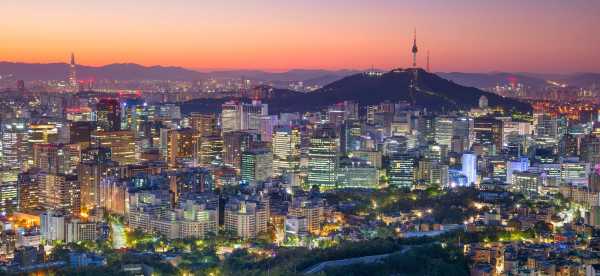
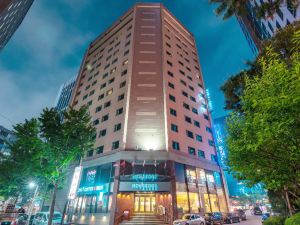



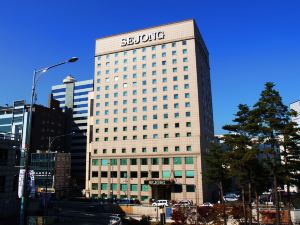
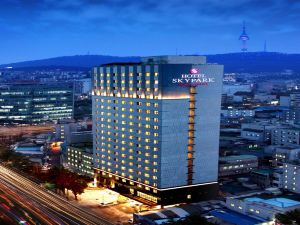


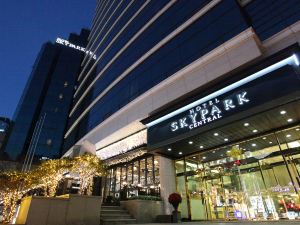
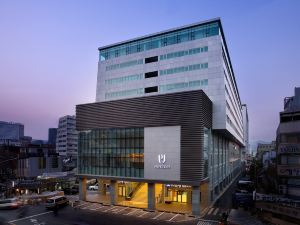

















Very Good
489 Reviews